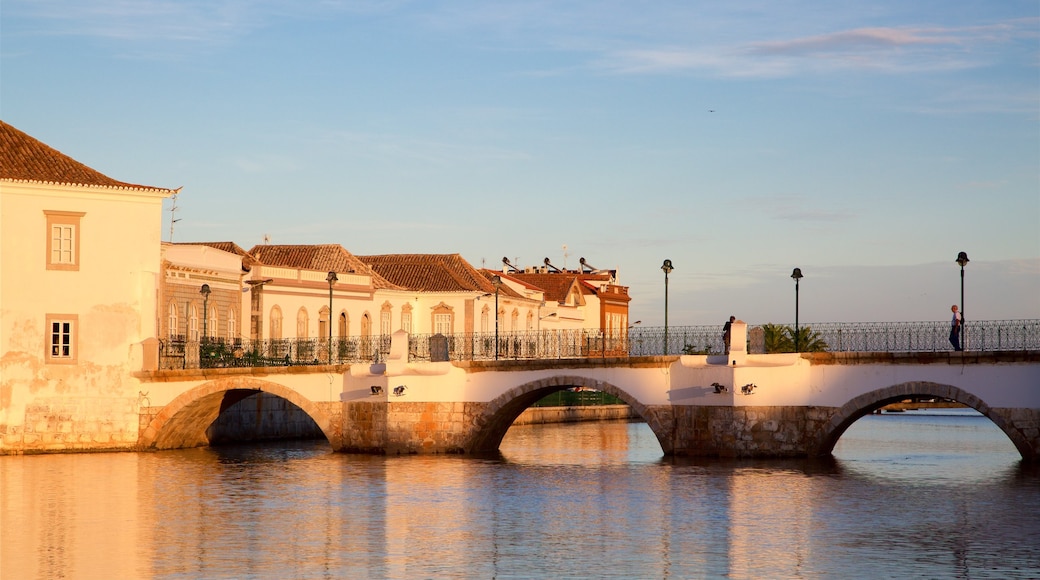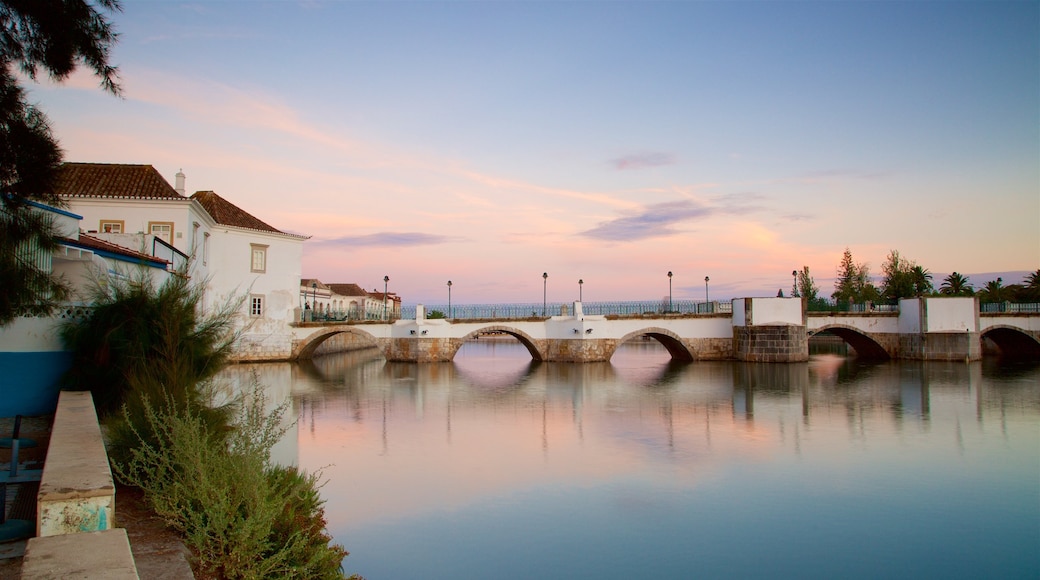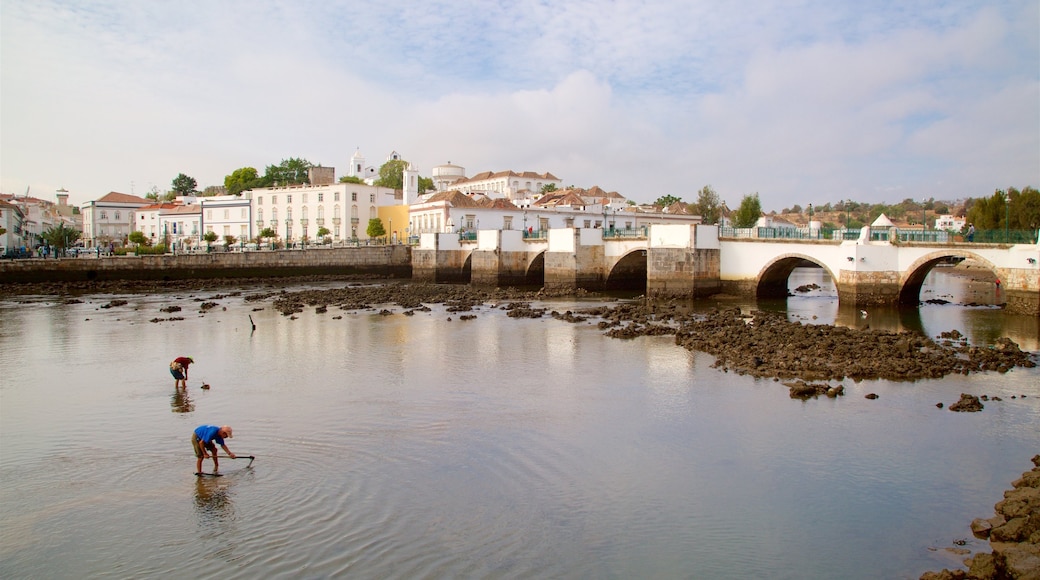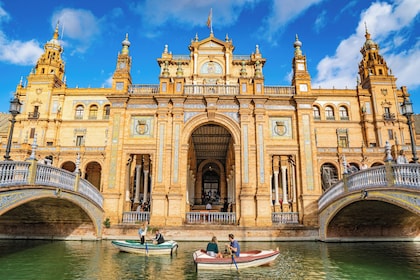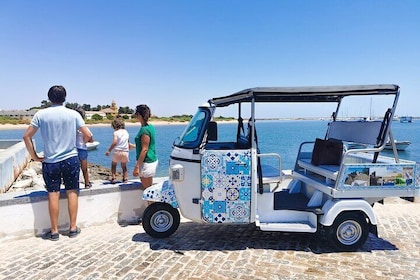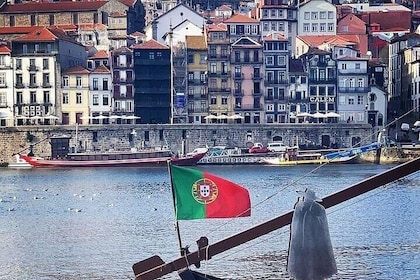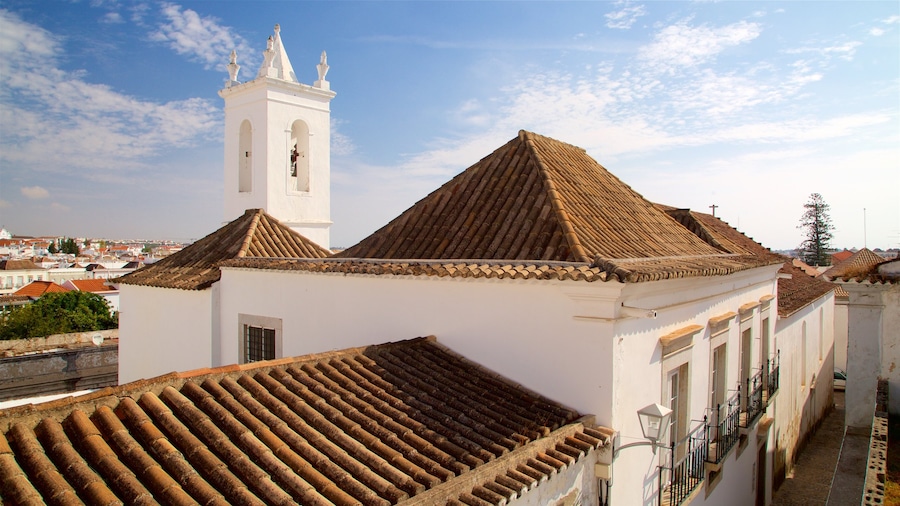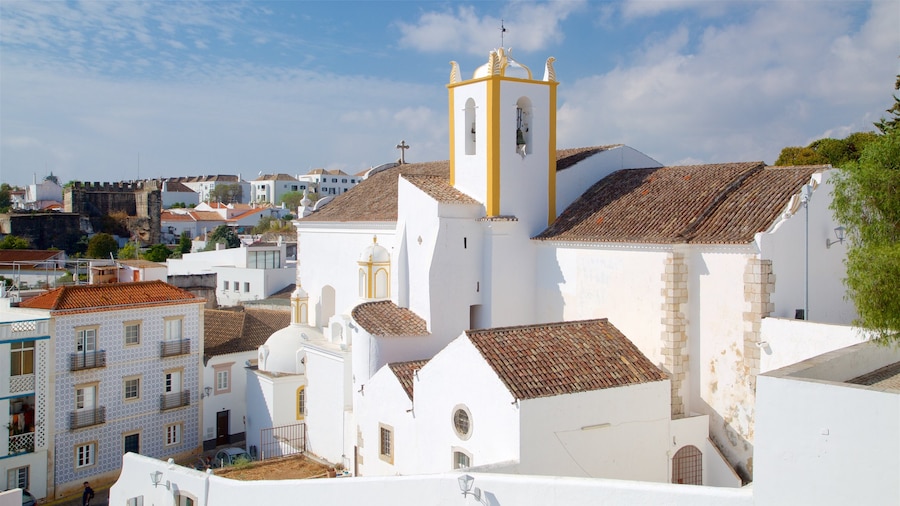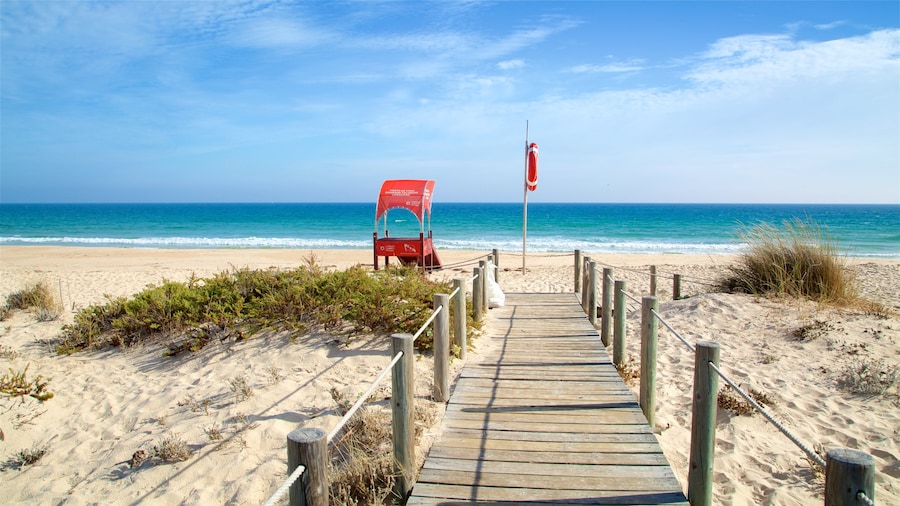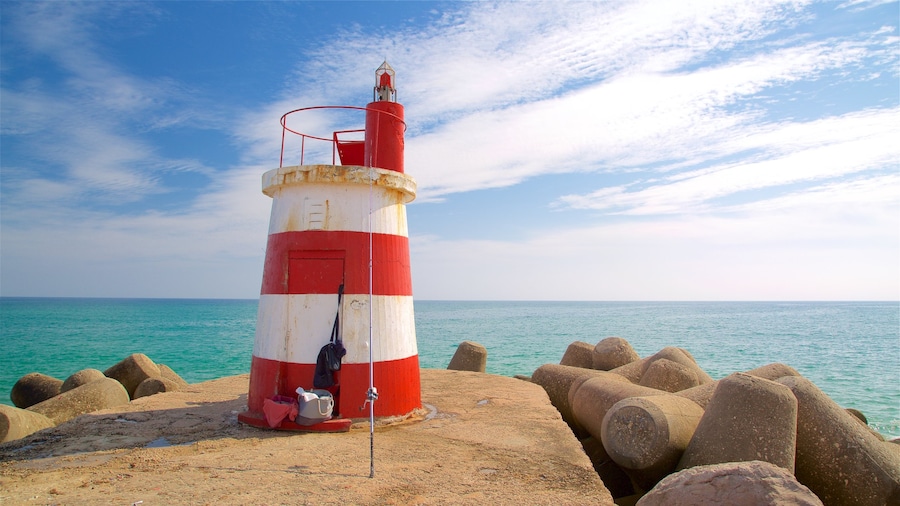Despite its name, Tavira’s central footbridge wasn’t constructed during the Roman Empire, but it does sit where an ancient bridge once was.
Wander across the Roman Bridge (Ponte Romana) and look upriver at the old town of Tavira. The bridge that stands today does not look like the structure that was originally built here. The original bridge dates back to the 12th century, when the ancient township was a part of al-Andalus, the Moorish territory that stretched across Islamic Iberia.
Spanning the Gilão River, the Roman Bridge was named for its position on the old Roman road linking Tavira to Castro Marim. Admire the bridge’s heritage architecture and enjoy pretty views across the town from its pedestrianized span.
View the Roman Bridge from a distance in the modern amphitheater in Praça de República, the town’s historic riverfront square. Note the bridge’s seven arches, which stretch between broad hexagonal pillars. The bridge you see was designed to replace the old Moorish bridge by the military architect Mateus do Couto in the 1650s. A flood in 1989 severely damaged the bridge, which resulted in a partial reconstruction in the 1990s.
Make your way across the footbridge, which is bound by pretty green-painted iron fencing. Old-fashioned lampposts are dotted along the walkway. As you look out across the heritage buildings that flank the riverfront, consider how the city would have appeared in its medieval era under Islamic rule.
Look out across the city’s riverfront and admire the traditional 19th-century townhouses along the river’s edge. The bridge is home to one of Tavira’s most popular viewpoints. Take photographs of the magnificent view upriver as a souvenir for your visit to the town. Downriver, you’ll see the leafy fronds of palm trees in the Jardim do Coreto and a collection of boats moored in the marina.
The Roman Bridge is located in the heart of historic Tavira. It extends north from Praça de República. Visit the bridge any time of the day for free. Add the bridge to your walking tour of Tavira and check out the magnificent old churches on the south bank of the river.
